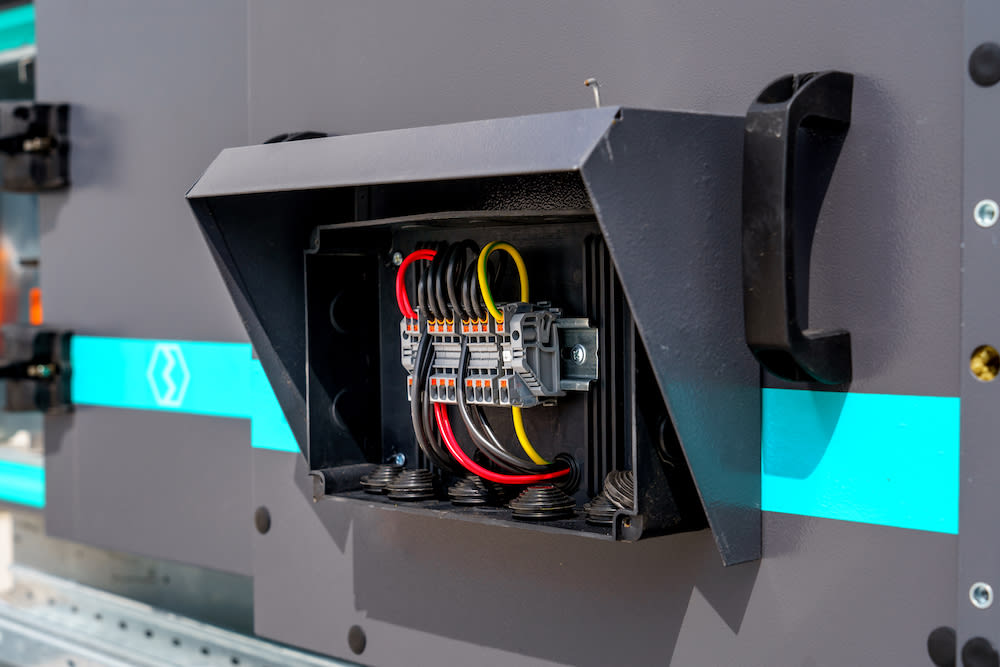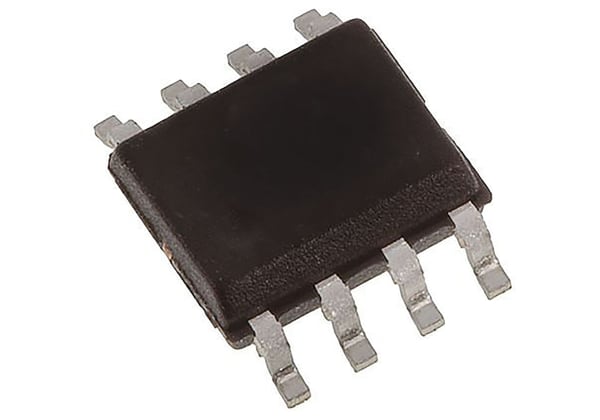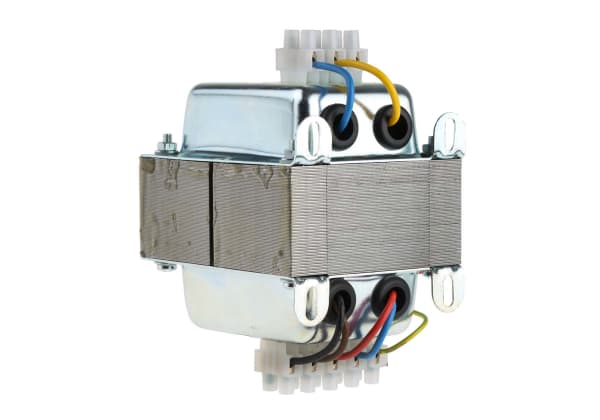- Published 30 Sept 2024
- Last Modified 30 Sept 2024
- 7 min
Powering Industrial Automation Using Inverter Drives
Learn about how inverter drives work and the vital role they play in controlling the torque and speed of the AC motors used throughout our lives.
What are Inverter Drives?
Reviewed by Stephen Bettles, Technical Support Engineer (September, 2024)
Inverter drives, also known as variable frequency drives (VFDs) or frequency inverters, are electronic devices used to control the speed and torque of three phase electric motors. They achieve this by varying the frequency and voltage supplied to the motor, allowing for precise control over motor speed. Inverter drives are essential for applications requiring variable speed motors, such as industrial automation and HVAC systems. They convert fixed frequency AC power from the mains into adjustable frequency and voltage output, enabling efficient operation and energy savings.
Exploring Types of Inverter Drives
Inverter drives serve multiple purposes in various industrial settings. It is important to be able to differentiate between various types of these inverter drives to understand their functionality and versatility. Following are some important types of inverter drives being utilised in the market today:
- AC VFDs: These drives are designed to control the speed and torque of three phase AC induction motors by adjusting the frequency and voltage of the electrical supply. They are widely used in industrial automation, HVAC systems, and pumps where variable speed operation is beneficial for energy savings and process optimisation.
- Vector Control VFDs: Also known as sensor-less vector control or field-oriented control (FOC) drives, these VFDs provide precise control over motor speed and torque. They use algorithms to estimate the rotor position of the motor, enabling accurate control even at low speeds and under varying loads. Vector control VFDs are used in applications requiring high-performance motor control, such as robotics and CNC machines.
- Servo Drives: Servo drives are specialised VFDs that provide highly precise control over the position, velocity, and acceleration of servo motors. They are commonly used in applications demanding precise motion control, such as industrial robots, CNC machining centres, and automated packaging systems.
- Regenerative VFDs: Regenerative drives are capable of recovering energy from decelerating motors and returning it to the power supply. They are used in applications where braking or deceleration occurs frequently, such as cranes, hoists, and elevators, to improve energy efficiency and reduce heat generation.
Understanding Inverter Motors
What is an Inverter Motor?
An inverter motor, also known as a variable frequency motor, is an electric motor designed to operate with an inverter drive or variable frequency drive (VFD). This flexibility allows for precise control over the motor's performance, making inverter motors ideal for applications requiring variable speed operation, such as industrial automation, HVAC systems, pumps, and fans. Inverter motors contribute to energy efficiency by reducing power consumption during periods of lower demand and enabling smoother operation with fewer mechanical stresses compared to traditional fixed-speed motors.
VFD Control Techniques for Efficiency
VFD control techniques refer to the methods and strategies used to regulate and optimise the operation of variable frequency drives (VFDs) or variable speed drives (VSDs). These techniques are crucial for achieving precise control over motor speed, torque, and efficiency in various industrial and commercial applications. Here are some common VFD control techniques:
- Open-Loop V/Hz Control: This is the simplest and most common control method where the VFD adjusts the output voltage and frequency to the motor based on a preset ratio (V/Hz). It is suitable for applications with constant torque loads, such as pumps and fans.
- Closed-Loop (Feedback) Control: In closed-loop control, the VFD receives feedback from sensors (such as encoders or tachometers) on the motor's actual speed or position. This feedback allows the drive to adjust the output frequency and voltage dynamically, maintaining precise speed or position control. Closed-loop control is essential for applications requiring high accuracy, such as CNC machines and robotics.
- Sensor-less Vector Control: Also known as field-oriented control (FOC), this technique uses sophisticated algorithms to estimate the motor's rotor position without the need for feedback sensors. Sensor-less vector control provides better torque control and performance at low speeds compared to open-loop V/Hz control. It is suitable for applications with varying loads and speeds, such as conveyor systems and extruders.
- Direct Torque Control (DTC): DTC is a digital control method that provides fast and precise torque control without requiring speed feedback. It calculates and controls the motor torque and flux directly based on the motor's electrical parameters. DTC offers high dynamic performance and fast response times, making it ideal for applications where quick changes in torque are critical, such as machine tools and presses.
- Energy Optimisation Control: Some advanced VFDs include energy optimisation features that adjust the motor's speed and power consumption based on real-time load conditions. These control techniques help maximise energy efficiency and reduce operating costs by matching motor speed and power output to actual process demands.
- Multi-motor Synchronisation: In applications where multiple motors need to operate together synchronously, such as in printing presses or conveyor systems, VFDs can synchronise the speed and torque of multiple motors using specialised control algorithms. This ensures smooth operation and coordination between motors, improving overall system performance.
Applications of Inverter Drives
Inverter drives offer versatile solutions for controlling motor speed and optimising energy consumption across a wide range of industries and applications, contributing to improved efficiency, reliability, and sustainability in modern technological systems. Here are some important applications of inverter drives:
- Industrial Automation: Inverter drives are extensively used in industrial automation systems to control the speed and operation of motors in conveyor belts, pumps, compressors, and fans. They optimise energy consumption, improve process efficiency, and enable precise control over production processes.
- HVAC Systems: Heating, Ventilation, and Air Conditioning (HVAC) systems benefit from inverter drives to regulate the speed of motors in air handling units, chillers, and pumps. This allows HVAC systems to adjust capacity based on building load requirements, improving energy efficiency and comfort control.
- Water and Wastewater Treatment: Inverter drives play a crucial role in water and wastewater treatment plants by controlling the speed of pumps and blowers. They optimise flow rates and pressure, reduce energy consumption, and extend equipment life through gentle motor starts and stops.
- Commercial Buildings: Inverter drives are used in commercial buildings for applications such as escalators, elevators, and HVAC systems. They provide smooth motor control, reduce mechanical wear, and optimise energy consumption based on building occupancy and load conditions.
- Oil and Gas Industry: Inverter drives are deployed in oil and gas operations for controlling pumps, compressors, and fans. They enable precise control over flow rates, pressure, and temperature, optimising production efficiency and reducing operational costs.
- Marine and Shipbuilding: Inverter drives are used in marine applications for propulsion systems, thrusters, and auxiliary equipment on ships and vessels. They provide variable speed control, improve fuel efficiency, and enhance manoeuvrability and safety at sea.
- Food and Beverage Processing: Inverter drives regulate the speed of motors in food processing equipment such as mixers, conveyors, and packaging machines. They ensure consistent product quality, reduce waste, and meet stringent hygiene and safety standards.
- Mining and Minerals: Inverter drives are employed in mining operations for controlling crushers, conveyors, and pumps. They optimise material handling processes, reduce downtime, and improve operational efficiency in harsh mining environments.
- Electric Vehicles (EVs): Inverter drives are integral to electric vehicle propulsion systems, controlling the speed and torque of electric motors. They provide smooth acceleration, regenerative braking, and efficient energy management, contributing to the performance and range of electric vehicles.

Conclusion
The integration of inverter drives, also known as variable frequency drives (VFDs), has improved industrial automation by enabling precise control over variable speed motors. These drives, utilising advanced VFD control techniques, such as sensor-less vector control and direct torque control (DTC), facilitate efficient operation of equipment across diverse sectors. Whether optimising energy usage in HVAC systems with frequency inverters or enhancing production efficiency in manufacturing processes with VFD converters, inverter drives play a pivotal role. Their ability to adjust motor speed and torque ensures tailored solutions that meet specific application needs. As industries increasingly prioritise energy efficiency and operational flexibility, inverter drives continue to drive innovation and productivity, setting new standards for industrial automation worldwide.
Related Articles
Related links
- What’s the Role of PLCs in Automation?
- Maintenance’s contribution to climate commitments
- Robotics in Industrial Maintenance
- What role can MRO play in supporting the waste industry?
- JAE, N/MS Series Industrial & Automation Circular Connector...
- Industrial Automation
- The Future of Automation – A Guide to What’s Next
- MikroElektronika ccRF2 Click CC1120 ISM for Home, Industrial...



